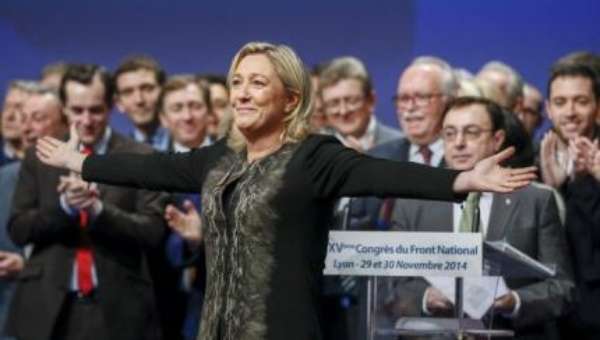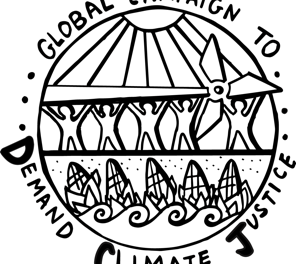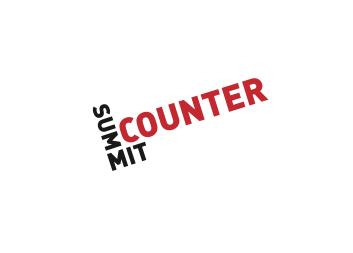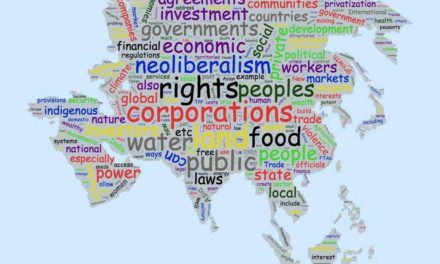In the wake of the Charlie Hebdo and kosher supermarket shootings, security forces in Belgium launched a massive manhunt for what they described as jihadist sleeper cells that were about to mount new terrorist attacks. To many observers, however, the operation seemed to stem less from hard intelligence than from the police hitting the panic button.
Fanning the Flames
The paranoia coursing through the public is not surprising since the western media, particularly the sensationalist CNN, have painted an image of thousands of homegrown jihadis returning to Europe to sow terror after military training in Yemen, Iraq, and Syria at the hands of Al Qaeda and Isis, with the security agencies having little capability of following up on them. CNN has warned its global audience that, according to intelligence sources, “as many as 20 sleeper cells of between 120 and 180 people could be ready to strike in France, Germany, Belgium and the Netherlands.”
The sense of entering an exceptional period has been reinforced by high-profile media appearances by so-called security experts like US Senator John McCain, Interpol Chief Jurgen Stock, and former Central Intelligence Agency Chief Leon Panetta. McCain announces that the threat to the West is so great that only deploying American “boots on the ground” in Iraq and Syria to fight Isis will stem the terrorist tide in the West. Stock urges hitting suspected terrorists “before they hit you.” Panetta says that the terrorist assault is now entering “a much more dangerous chapter” that will require more coordinated surveillance and action on the part of the US and European security forces. He warns—on CNN, not surprisingly–that Isis and Al Qaeda “are engaged in a much more aggressive effort to conduct violence not only in Europe, but I think it’s a matter of time before they direct it at the United States as well.”
The Real Threat
Panetta’s statement is irresponsible speculation masking as expert opinion. What is not speculation is that the situation of the migrant communities in Europe is, to borrow his words, entering a new, more dangerous chapter. While the official responses of Western European governments to the Paris events have been predominantly along the lines of liberal discourse, touching on themes like “inclusiveness” and “assimilation” of migrants and the Muslim community, migrants throughout the continent fear that the real solution entertained by increasing numbers of white Europeans is that proposed by Hungarian Prime Minister Viktor Orban, who declared bluntly: “We should not look at economic immigration as if it had any use, because it only brings trouble and threats to European people. Therefore, immigration must be stopped. That’s the Hungarian stance.” Ironically, Orban had just attended the January 11 “Unity Rally” in Paris that was joined by thousands of Muslim migrants bearing the slogan “Je suis Charlie.”
France as Epicenter
With the largest Muslim immigrant community in Europe, numbering over four million, France has become the focus of the continent’s struggle over migration. Oban’s views on cracking down on migrants are reflected domestically by Marine Le Pen, who, in an op-ed piece published in the New York Times, called not only for “restricting immigration” but also for “stripping jihadis of their citizenship,” a proposal that many migrants took to apply to more than just active jihadis. Le Pen’s National Front is on a roll, having won 26 per cent of the vote, or 4.1 million votes, in the May 2014 elections to the European Parliament, a result described by French Prime Minister Manuel Valls as “a shock, an earthquake.” Recent polls show French President Francois Hollande losing to Le Pen in a runoff election if held today.
In her contribution to the Times, Le Pen calls attention to the fact that “Whether from the right or the left, one French administration after another has failed to size up the problem or the task to be accomplished.” This is probably the only accurate statement in the piece.
It is not that successive administrations have not had the opportunity to address the issue in a decisive way. The biggest opportunity was provided by the massive riots in the banlieues or miserable suburbs of French cities a decade ago. The 2005 riots, which lasted for 20 successive nights and resulted in the burning of 9000 vehicles and the destruction of 80 schools and many business establishments, brought to the eyes of France and the world the desperation of the migrant communities that inhabited the suburbs and the tremendous resentment of their young people. As Mary Dejevsky of The Independent wrote, the riots offered a glimpse of the “France that is marooned between town and country, shut away behind ugly concrete walls, confined inside rotting tower blocks…the France that has failed.” It was in these banlieues that the Charlie Hebdo gunmen, the Kouachi brothers, Cherif and Said, were born, raised, and worked.
The Illusion of Equality
The riots could have been the beginning of a process of truly integrating communities that were defined as French but did not have the opportunities that other French people had. Yet, for ten years, hardly anything in the way of substantial reform was done to speed up the assimilation of migrants and improve their living conditions. One key problem was, paradoxically, rooted in the ideology of the French Revolution. As one French immigration specialist noted, “Part of the problem is the French approach to integration, based on the concept that everyone is equal. The idea that we are equal is fiction. Ethnic minorities keep being told they do not exist.” French official ideology is so intent on erasing particularities that the government does not allow statistics to be broken down by religion or ethnicity. The result of ideological blinders is, as Guy Arnold describes it, a “resentful society of supposedly equal French citizens that has grown up in the heart of France’s capital under the blind eyes of successive governments that have simply not wanted to know.”
Laicite
The life of immigrants was further complicated by another legacy of the French Revolution, the core principle of laicite or secularism. The separation of Church and state has always been strict in France, but in recent years, it has bordered on intolerance, with a devastating impact on relations between Muslims and the dominant society. Invoking laicite, a movement drawing support from left to right was able to pass in 2004 a law banning the hijab, a scarf that covers the head and chest, in public schools. This was followed in 2011 by another law, again with support across the ideological spectrum, that criminalized hiding one’s face in public, effectively banning two other traditional items of clothing worn by Muslim women: the niqab, a veil that covers the entire face, and the burqa, an outer garment that covers one from head to toe.
Some analysts claim that it was not so much the ideology of laicite that was at fault but doctrinaire ideologues and self-interested politicians who allowed the issue to run out of control instead of appealing to common sense and tolerance to allow these regular items of female Muslim dress to become parts of a diverse sartorial scene, as in Britain and the United States.
Failure of the French Model
A third reason for the absence of reform was the smug conviction among technocrats that the “French model of assimilation” was on the whole working and the 2005 riots were merely a rough patch on the road. In the “French model,” according to analyst Francois Dubet, “the process of migration was supposed to follow three distinct phases leading to the making of ‘excellent French people.’ First, a phase of economic integration into sectors of activities reserved for migrants and characterized by brutal exploitation. Second, a phase of political participation through trade unions and political parties. Third, a phase of cultural assimilation and fusion into the national French entity, with the culture of origin being, over time, maintained solely in the private sphere.”
What the technocrats did not face up to was that by the 1990’s the mechanism sustaining the model had broken down, owing largely to the inability of a capitalist economic system in the grip of neoliberal policies to generate the semi-skilled and unskilled jobs for migrant youth that had served as the means of integration into the working class for earlier generations of migrants. Youth unemployment in many of the banlieues reached 40 per cent, nearly twice the national average. And with the absence of stable employment, migrant youth lacked the base from which they could be incorporated into trade unions, political parties, and cultural institutions.
Impeded by ideological blindness to inequality, political mishandling of the Muslim dress issue, and technocratic failure to realize that neoliberalism had disrupted the economic ladder to integration, authorities increasingly took to repressive measures to deal with the “migrant problem.” The solution took the form of even tighter policing of the banlieues, with an emphasis on controlling young males, and, most notably, an escalation of deportations. When Nicolas Sarkozy took office as president of France in 2007, deportation became the preferred method of dealing with migrants. With his Interior Minister given free rein, a record 32,912 migrants were deported in 2011, a 17 per cent rise from the year before. The minister, Claude Gueant, regularly engaged in explosive anti-immigrant and anti-Islamic rhetoric, linking Muslim immigrants to crime and drugs and asserting that Muslims praying in the street led to the “French no longer [feeling] at home.” As the 2012 presidential elections drew near, Muslim and immigrant baiting became the means by which Sarkozy tried, unsuccessfully, to cut into Marine Le Pen’s right-wing base to stop Francois Hollande from being elected president in 2012.
Where was the Left?
Notably absent as a decisive force shaping the politics of migration was the Left. This is because, for the most part, the Left marginalized itself. The Socialists largely bought into the technocrats’ assimilation model, while the Communist Party of France (PCF) oscillated between hostility to and uneasy acceptance of migrants. Failing to understand capitalism’s dynamic of creating new strata of marginalized workers, the PCF largely stuck to representing, servicing and protecting its traditional industrial working class base. Indeed, the PCF was initially hostile to migrants, with the party leadership voting to limit migration in 1980 and PCF-dominated local governments opposing entry of migrants to housing projects. Currently, although the party supports the regularization of undocumented migrants, the PCF and the migrant community view each other with mutual suspicion.
This is not to say that there were no efforts on the part of the militant left to organize migrants. Small Maoist groups dabbled in mobilizing them in the 1970’s and 1980’s. But with the collapse of the Soviet Union and the socialist project, many progressive activists shied away from organizing unorganized sectors of the working class, which they regarded as a failed agent of change, while others evolved into union bureaucrats. Some militants became active instead in the largely middle-class based anti-globalization movement, while some of the most progressive promising intellectuals, like the now celebrated Alain Badiou, moved from politics to philosophy. (Badiou as a young academic had founded a Maoist formation, the Marxist Leninist French Communist Union [UCFML], that tried to organize migrants into class-conscious workers.)
Over the last decade, one issue in particular eroded the already tenuous ties of the Left to the Muslim migrant community. While all sectors could unite against racism and Islamophobia, a debilitating debate split their ranks on the issue of the hijab, with some viewing its use in public places as a violation of laicite and others defending the right of women to wear it.
With the ossification of class politics, ethnic, cultural, national, and racial themes came to dominate public debate both inside and outside the banlieues. For the youth of the banlieues, the vacuum created by the absence of the left had critical consequences. As Dubet put it, “the traditional character of the left-wing activist supporting the population’s collective protest is disappearing behind the religious figure embodying the alternative route for a dignified and moral life in a city ‘outside the real world,’ in a community protected from a society perceived as being impure.”
Reading accounts of their trajectory, one cannot but entertain the possibility that in other circumstances, Cherif and Said Kouachi would probably have been ripe for recruitment into a progressive movement. But with no figure on the secular left to provide guidance to their feelings of injustice and their idealism, that vacuum, in the case of Cherif, was filled by Farid Benyettou, a devout Muslim of Algerian descent who tirelessly held discussion groups with impressionable young men, encouraging them to join jihad and setting up, according to one investigative report, “a pipeline for young French Muslims” to travel to join Abu Musab al-Zarqawi’s Al Qaeda’s network in Iraq. The rest, as they say, is history.
An Inevitable Ascendancy?
The real threat in France and in Europe is not the fantasy of a thousand jihadist sleeper cells poised to wreak havoc on society. The real threat is the repression of migrant communities by national security states with the backing of a significant segment of the majority population mobilized by right wing forces. These forces are becoming increasingly sophisticated in popularizing their reactionary project. In her recent op-ed piece in the New York Times, Marine Le Pen invokes the name of the liberal icon Albert Camus and deploys Republican discourse: “We, the French, are viscerally attached to our laïcité, our sovereignty, our independence, our values. The world knows that when France is attacked it is liberty that is dealt a blow…The name of our country, France, still rings out like a call to freedom.” Some commentators have interpreted this new style as a “move to the center.” They are mistaken. It is extremist intent masked in secular Republican discourse. What is unmistakable, though, is the confidence with which Le Pen now speaks to the West. It is the confidence of one who feels she is in the antechamber of power.
Is the ascendancy of Le Pen and similar far-right leaders inevitable?
In France, as in Europe as a whole, the relationship between the dominant society and the migrant community is a story of missed opportunities, timid initiatives, and failures in leadership. It is also a story of abdication. A central actor that had played a role in the integration and amelioration of the conditions of earlier oppressed and exploited communities deserted the scene, leaving the field to racists and religious fundamentalists. Still, a secular Left that bridges the growing gulf between communities by asserting, beyond real differences of religion, culture, and ethnicity, the overriding common interest of people as workers that are exploited and divided by an aggressive neoliberal capitalism and rallies them around a transformative emancipatory project is still Europe’s best antidote to the brewing maelstrom. Whether the European Left is up to the challenge is, however, another story.
*As chairman of the Committee on Overseas Workers Affairs of the House of Representatives of the Philippines, Walden Bello is engaged in the issues facing migrant workers.
Link to source: TeleSUR










